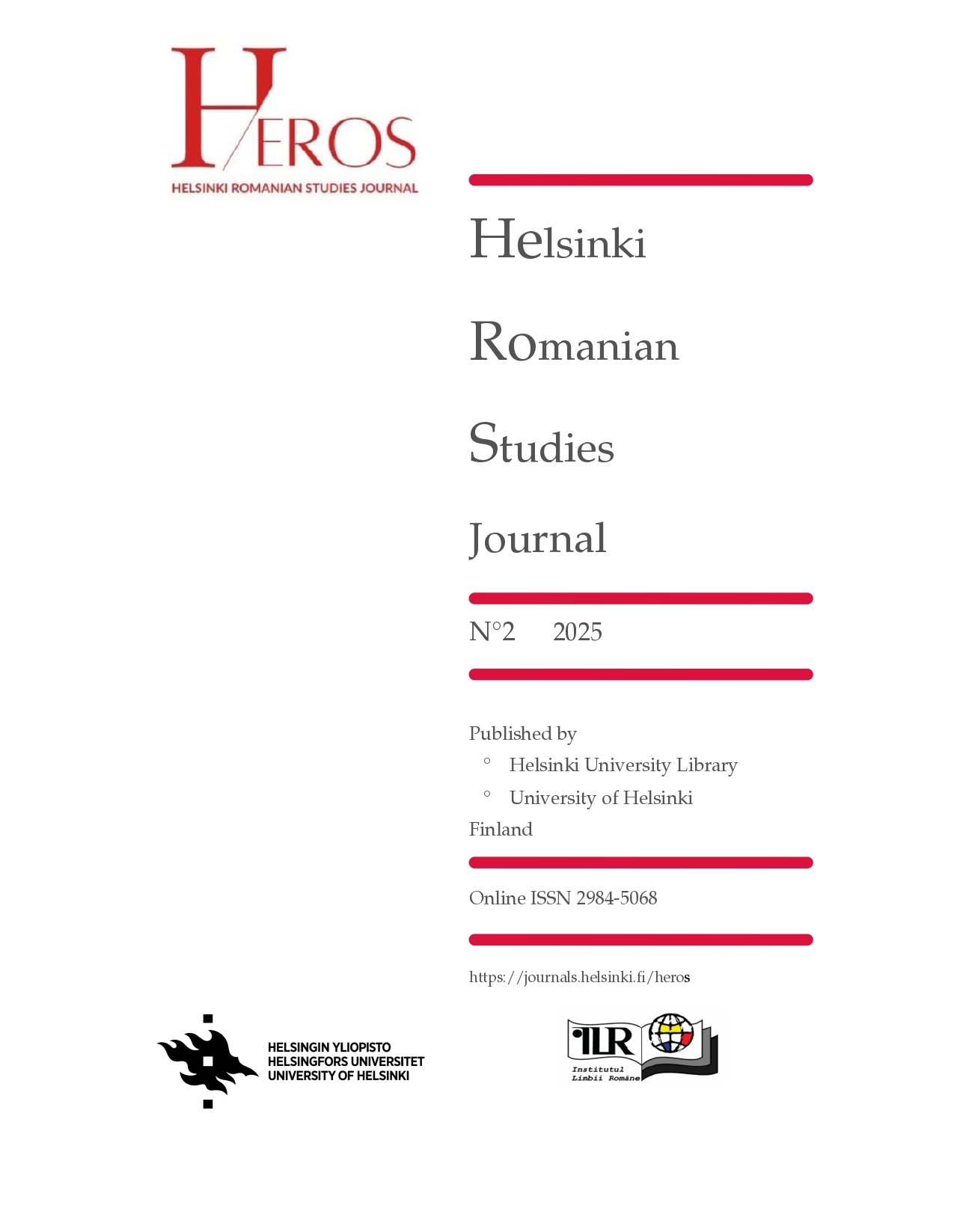Nina Cassian, Memoria ca zestre – memoriile limitelor, limitele memoriei.
Jurnalul ca formă de libertate interioară și spațiu de reflecție asupra exilului intern și extern
DOI:
https://doi.org/10.31885/her.1.2.015Keywords:
Nina Cassian, diary, memory, Communism, exile, frontierAbstract
Published between 2003 and 2005, Nina Cassian’s diary is an important historical document, as it reflects the living and working conditions of writers during the communist period. Equally significant is the writer’s disillusionment, her youth having been marked by sincere adherence to the communist revolution. Despite this, even after the publication of her debut volume, Nina Cassian became a victim of ideological persecution and tried to conform to the requirements of socialist realism, albeit unsuccessfully. The inability to adapt, the incomprehension of the criticism she received, and her sharp gaze upon the world characterize the three volumes and shape a path of disillusionment. The first volume of memoirs has a unique structure, as it contains three layers of writing: the immediate recording of events, typical of a diary, followed by observations added during a first rereading in the 1970s, and a third layer, that of the final rereading and the authorial discourse freed from the self-censorship inherent in life under a totalitarian system, after 1985. That year, the author was in the United States on a Soros scholarship when she learned of the death of her friend Gheorghe Ursu. Frightened, she chose the path of exile, so the notes and additions made on American soil reflect the breaking of self-limitations caused by the preventive fear of possible searches – a fear with which all writers in totalitarian regimes lived and continue to live. Thus, the diary is both a valuable document of its time and an intricate, multifaceted textual mechanism. The two subsequent rereadings become journeys through time, while the act of remembering and completing the text constitutes a transgression of the limits imposed by self-censorship. The present moment, immediately recorded in the diary, intertwines with the present of rereading, from which the writer brings additions, clarifications, and later revelations prompted by other experiences. Finally, exile also implies the passage from one language to another, and Nina Cassian takes this step as well, choosing to write in the language of her adopted country, even though, in interviews, she consistently stated that her true homeland was and remains the Romanian language.
Downloads
Published
How to Cite
Issue
Section
License
Copyright (c) 2025 Cristina Elena Gogâță

This work is licensed under a Creative Commons Attribution 4.0 International License.






